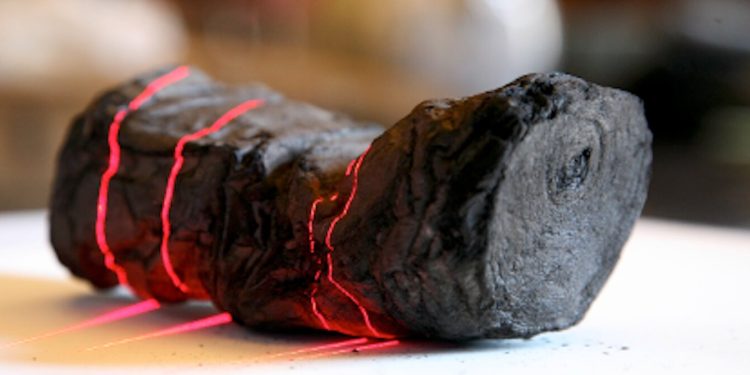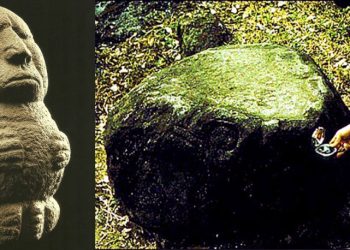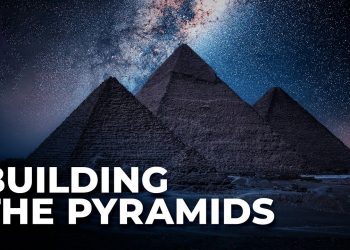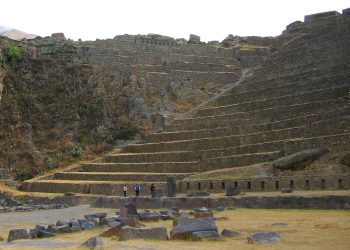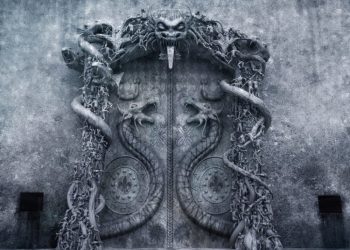The Vesuvius Challenge stands as a groundbreaking competition in classical studies, with the potential to spark a new Renaissance. This initiative aims to harness the power of artificial intelligence (AI) to virtually unroll and decipher hundreds of ancient papyrus scrolls that have remained sealed for nearly 2,000 years. When Mount Vesuvius erupted in AD 79, it buried several cities around the Gulf of Naples under layers of volcanic material, including Herculaneum, located near Pompeii. In the 18th century, archaeologists excavated a remarkably opulent Roman villa near Herculaneum’s ancient city walls and shoreline. The villa’s stunning mosaics, statues, busts, and wall paintings were preserved by the ash, offering a glimpse into the grandeur of Roman life. This villa, known as the Villa of the Papyri, is most famous for its extraordinary treasure: a library containing approximately 1,000 papyrus scrolls. Although these scrolls were carbonized by the eruption, turning them into a kind of charcoal, they remained intact beneath the earth until their rediscovery.
The villa likely belonged to Lucius Calpurnius Piso Caesoninus, a Roman consul and Julius Caesar’s father-in-law. He was a patron of the Epicurean philosopher Philodemus of Gadara (110–30 BC), who is believed to have lived in the villa. Philodemus was educated in Athens, the center of Epicurean philosophy, where Epicurus, the school’s founder, taught that the world is composed of atoms and emphasized the importance of pleasure, friendship, and atheism for a happy life. The original Greek texts of the Epicureans were lost in late antiquity, but a Latin poetic version of Epicurus’s philosophical views survived, titled “On The Nature of Things,” focusing on ethics and physics. Since their discovery, numerous attempts have been made to mechanically unroll the fragile papyri, with only limited success. Many scrolls were severely damaged or nearly destroyed in the process, leaving more than 300 still waiting to be unrolled in Naples.
This is where AI enters the picture. The quest to noninvasively read the Herculaneum papyri was first undertaken by Brent Seales, a computer scientist at the University of Kentucky, in 2007. Over the next 15 years, Seales made significant progress with other ancient scrolls, but the Herculaneum papyri posed unique challenges. Seales realized that AI could be the key to distinguishing the carbon ink from the carbonized papyrus background. Initial experiments confirmed that AI could help recover the elusive ink from CT scans, but significant challenges remained in fully unlocking the scrolls’ secrets. Enter Nat Friedman, a Silicon Valley entrepreneur, who, after learning of Seales’s work, proposed launching an open-source AI challenge to expedite progress. A series of prizes, including a $1 million grand prize, was offered to individuals or teams that could successfully crack the scrolls.
Since March 2023, more than 1,000 teams have joined this competition. By October 2023, the first letters and lines of Greek text had been detected, and in February 2024, the first prize money was awarded to machine learning students Youssef Nader, Luke Farritor, and Julian Schilliger. Their AI model remarkably unveiled parts of 15 columns from the innermost portion of one scroll, revealing a text on ethics, likely authored by Philodemus.
How the Scroll Was Read
The “virtual unrolling” process begins by scanning the carbonized scroll in a particle accelerator at an extremely high resolution. The complex structure of the scroll is then analyzed and virtually flattened, though no text is visible at this stage. Next, the team trains AI models to detect ink on the papyrus, based on distinct patterns identified through visual inspection. The resulting images serve as definitive proof that virtually unrolling the Herculaneum scrolls is possible. Despite some technical hurdles, many unopened scrolls are expected to be virtually unrolled in the near future. This breakthrough has secured funding for the second phase of the Vesuvius Challenge, with backing from donors like Elon Musk’s Musk Foundation. The next goal is to scan more scrolls and to speed up and standardize the virtual unrolling process.
In the coming years, we may witness the emergence of dozens of new ancient Greek and Latin texts. Based on the texts already unrolled, it is likely that these works will cover topics such as ethics, mathematics, music, and the history of philosophy, especially within the Epicurean tradition. We might also see Stoic literature and possibly texts that include lengthy citations from other philosophers, as well as previously unknown historical information. The most exciting prospects, however, lie with the Latin papyri. There is a reasonable expectation that these scrolls could reveal historical and poetic works from Rome’s late Republican and early Imperial periods. The success of the virtual unrolling may even prompt new excavations at the Villa of the Papyri (phase four of the Vesuvius Challenge). Many researchers believe that another library, containing lost masterpieces of Greek and Latin literature, still awaits discovery.



